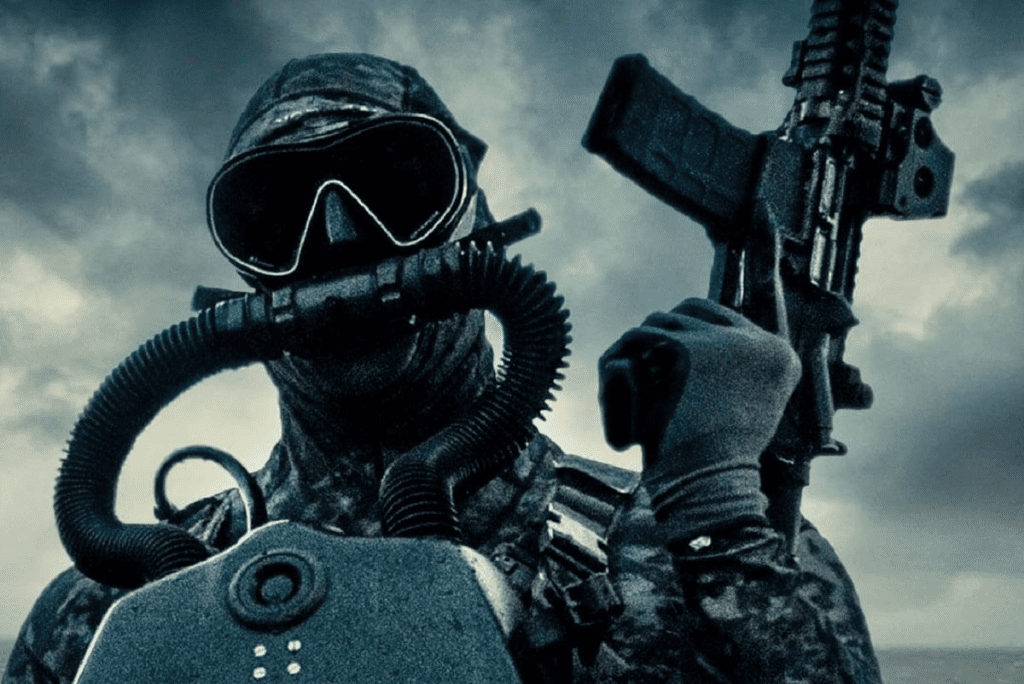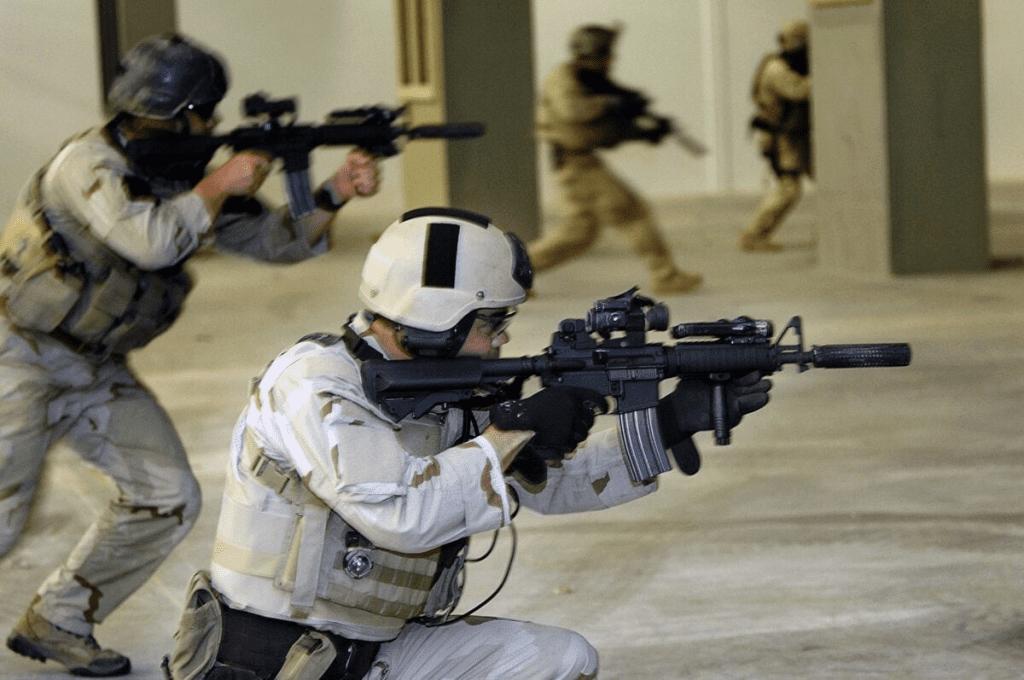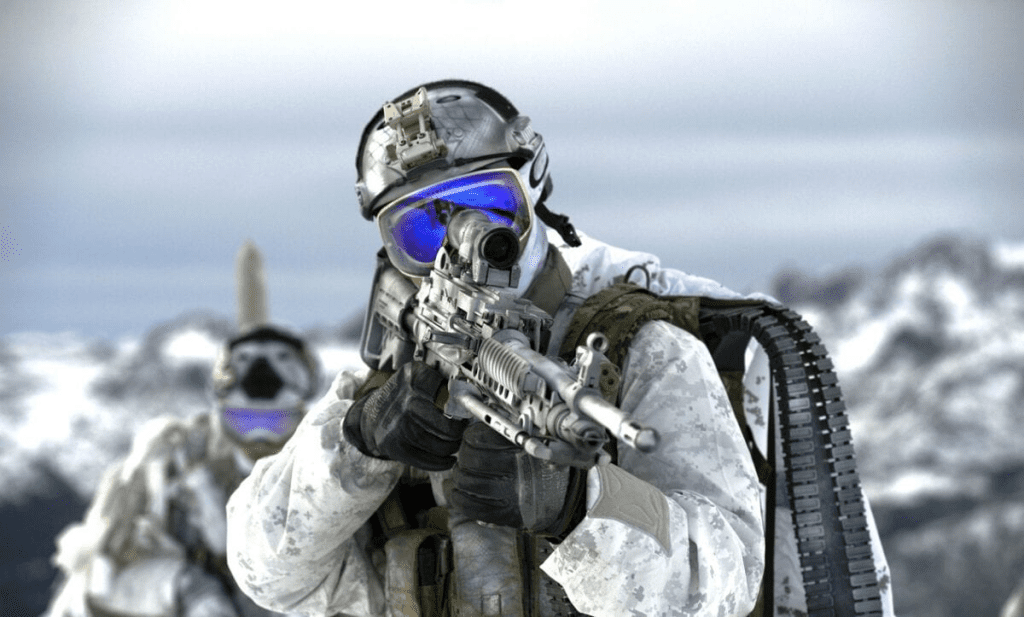
Key Points and Summary: Navy SEALs are the U.S. Navy’s premier special operations force, specializing in small-unit missions across land, sea, and air environments.
-Their roots trace to World War II Frogmen and the OSS Maritime Branch. Training is extremely rigorous, with an attrition rate often exceeding 65%. Candidates must endure BUD/S (Basic Underwater Demolition/SEAL), including the notorious “Hell Week,” followed by advanced SEAL Qualification Training.
-Graduates then receive the SEAL Trident and join an operational team. The SEALs have a distinguished record, from Vietnam to Afghanistan, including the raid that killed Osama bin Laden. Their deployments frequently involve high-stakes missions worldwide.
Inside Navy SEAL Training: What It Takes to Earn the Trident
Many young men today wish to challenge themselves beyond the typical bonds of jobs and careers. They’re looking for something that the civilian job market doesn’t offer. They’re looking to join and belong to something bigger. They want to dedicate themselves to protecting our country in ways the ordinary person is incapable or unwilling to do.
They choose to enter the world of the Special Operations Command (SOCOM), which has units from every service. The Army, Navy, Air Force, and Marines all have dedicated elite units that stand out as outstanding at their craft. Among these special forces are the Navy’s Special Operations units and the Navy SEAL teams.
Who Are the SEAL Teams, and What Do They Do
The SEALs sprang from the World War II UDTs (Frogman) and the OSS Maritime Branch. The Navy SEALs are the Navy’s primary special operations force and a United States Naval Special Warfare Command component.
The main missions of the SEALs (Sea, Air, and Land) are conducting small-unit special operations missions in maritime, jungle, urban, arctic, mountainous, and desert environments. SEAL Team missions center around Direct Action, Special Reconnaissance, foreign internal defense, and Unconventional Warfare.
The first SEAL Teams were created in 1962, with one on each coast. All came from the UDT Teams. With the Vietnam War about to get the United States heavily involved, President Kennedy was a huge proponent of Special Operations.
SEALs would fight with distinction during the war in Vietnam and were part of the Studies and Observation Group (MACV SOG) with Army Green Berets, Air Force personnel, and the CIA.
SEALs have fought in every conflict since Vietnam. During the war in Afghanistan, Navy SEALs were tasked with the killing of Osama bin Laden in Abbottabad, Pakistan. The team members of DEVGRU (aka SEAL Team 6) were able to infiltrate Pakistan undetected via helicopter. They landed outside the Bin Laden compound, infiltrated the compound, and killed all al-Queda terrorists inside, including Bin Laden.
As the wars in Iraq and Afghanistan came to a close, the Navy wanted the SEAL Teams to get back to their maritime roots.
Training Pipeline To Become a Navy SEAL
The Navy states that all Navy SEAL candidates are between the ages of 18 and 28, though candidates who are 17 can attend the training with signed parental permission. Navy SEAL candidates are also required to be United States citizens. This includes natural citizens and those who earned citizenship after immigrating to the US.

All SEALs must undergo a rigorous training program before wearing the Trident pin that denotes SEALs. The washout rate is exceptionally high, running between 65 to 80 percent, depending on the classes. The training could take up to two years to become a Navy SEAL. It consists of several phases:
Naval Special Warfare Preparatory School (NSW Prep): This 8-week course prepares candidates physically and mentally for the challenges ahead.
It starts with the initial Physical Screening Test and ends with a more demanding Modified Physical Screening Test, including a minimum of 70 push-ups in 2 minutes, a timed four-mile run in 31 minutes, and a timed 1,000-meter swim with fins in 20 minutes. The goal is to prepare the candidates for BUD/S training.
Basic Underwater Demolition/SEAL (BUD/S) Training: This 24-week course is divided into three phases: physical conditioning, combat diving, and land warfare. The first phase is where most SEAL candidates fail or quit, and at the end of the first phase is the famous “Hell Week,” a five-and-a-half-day smoker where the candidates are physically taxed to their limit with only a few hours of sleep.
SEAL Qualification Training (SQT): This is a 26-week course that provides SEAL candidates with advanced training in weapons, navigation, small-unit tactics (SUT), parachuting, cold-weather warfare, and combat diving.
Airborne Training: SEAL candidates attend the US Army Airborne School in Fort Benning, Georgia, for three weeks of basic parachute training.

SEAL Team Assignment: After SQT and Airborne School, the new graduates are awarded their SEAL trident and assigned to a SEAL Team.
SEAL Tactical Training (STT): Once assigned to a SEAL Team, members undergo additional training specific to the team’s specializations and operational requirements. This training is conducted at the Platoon level.
Once a graduate is assigned to a SEAL Team/Platoon, the training really starts. The Trident gets you in the door, but the training never stops. Depending on the team and area orientation, deployments to far-flung areas of the globe will be many and challenging. SEALs, Green Berets, and other members of the SOCOM community mainly work far away from the normal chain of command, so operators must be self-reliant, self-disciplined, exceptionally physically fit, think outside the box, and work within a small team.
Many operators may join one of the Special Mission Units under the Joint Special Operations Command (JSOC).


